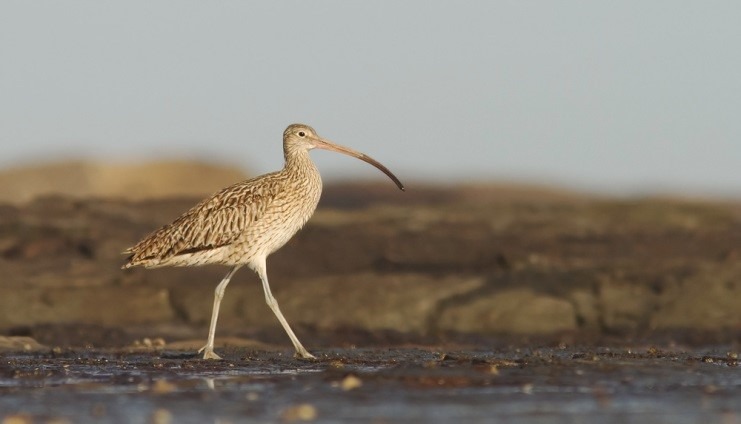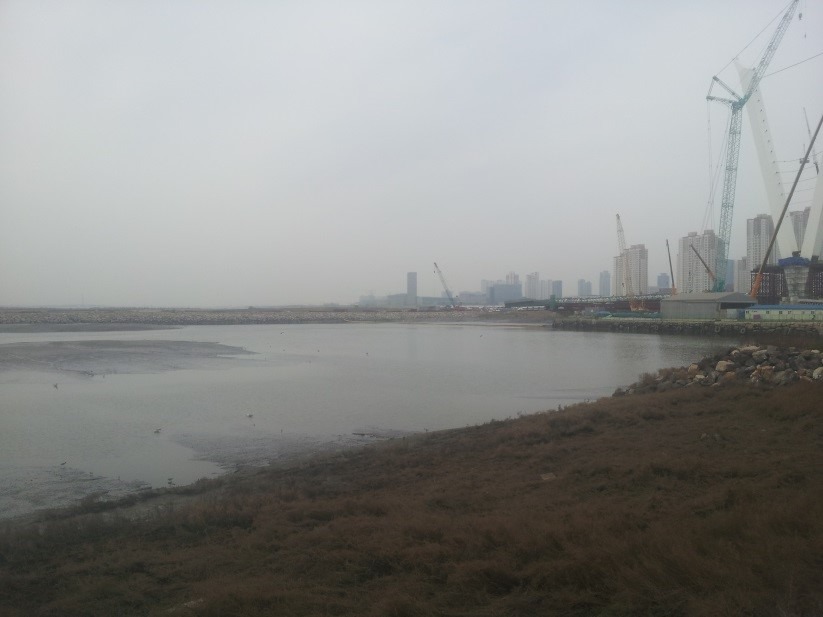Coastal development in the Yellow Sea has been occurring at the expense of important habitats; however recent decisions by the South Korean government may provide some hope. The question now is: are we prepared and determined to seize the opportunity?
Coastal reclamation has been practiced for decades by different countries around the world with specific purposes. Shallow waters with gentle slopes along coastal areas have provided an opportunity for land creation. Traditionally, these newly created lands were used for agriculture, but more recently there has been a shift towards their use as precincts for industrial complexes, housing, and infrastructure, such as ports and airports.
In this context, the Yellow Sea has experienced loss of intertidal habitats at an alarming rate. This sea, located in northeast Asia between China and the Korean peninsula, historically had vast tracts of intertidal mudflats. This feature has resulted from some traits of this sea, including its shallow water depth, gentle slopes, wide tidal range, and large river systems discharging sediments. The latest assessment of intertidal mudflats in the Yellow Sea has revealed the loss of 65% of their original extent in the 1950s, when they were estimated to cover 1.12 million hectares of the coastline.
The drivers of coastal reclamation in the Yellow Sea have been complex and involve the interaction of political and socio-economic factors. Contemporarily, the case has been fuelled in China by GDP growth targets set to local governments by the central government. By contrast, the reclamation of intertidal mudflats has been intertwined with political discourses of economic development to legitimise power in South Korea. These factors have been coupled by a population of 60 million people living in the basin and one of the fastest growing economies of the world.
Whilst much attention has been devoted to the loss of other ecosystems, such as rainforests and coral reefs, the consequences of reclaiming intertidal mudflats are no different. In all cases the loss and degradation of ecosystems result in declines of biodiversity and ecosystem services. Intertidal mudflats provide habitat to a myriad of invertebrates and vertebrates, including charismatic species, such as shorebirds. These habitats additionally provide fishery resources to local people and protect coastal areas from storm surges.
To monitor the environmental consequences of intertidal mudflat loss in the Yellow Sea has not been easy, but shorebirds have started to shed some light. Shorebirds are a group of small to medium-sized birds typically living in wetlands, either in coastal or inland areas. Many of these species are migratory, completing epic journeys across the globe to complete their life cycle. In the Asia-Pacific region, they mostly breed in the Tundra and Taiga from where they migrate to Southeast Asia, Australia, and New Zealand throughout the northern hemisphere winter. During their migration many of these birds rely heavily on mudflats of the Yellow Sea, where they stop to rest and refuel. As birds get funnelled through this region during their migration, habitat loss in this sea has a disproportionate effect on the whole population of those species. Recent studies indicate that the more migratory shorebirds rely on the Yellow Sea, the more they have declined.
The process of coastal reclamation in the Yellow Sea has comprised multiple projects; nevertheless there is little doubt that Saemangeum has been by far the best known of all. This specific project has become a milestone in the history of the country involved, as it is now recognised as the largest environmental battle to have ever taken place in South Korea. Saemangeum is the estuary of the Mangyeong and Dongjin Rivers close to Gunsan City, 180 km south of Seoul. This area was selected for reclamation as a commitment made by President Roh Tae-woo during his presidential campaign in 1987. The project officially commenced in 1991 and saw the final completion of a 33 km seawall in 2006, enclosing an area of 40 100 ha, of which 28 300 ha would be new land. The consequences of Saemangeum for migratory shorebirds were considerable. This estuary was one of the most important sites for migratory shorebirds in South Korea, as it used to provide habitat for threatened species such as Great Knot and Spoon-billed Sandpiper.
Conservation advocates did not win the fierce battle against the reclamation of Saemangeum, but in their effort they built important momentum that influenced subsequent decisions. Just north of Saemangeum is the Geum estuary, the mouth of one of the most important rivers in South Korea and a tremendously significant site for migratory shorebirds. This estuary had also been selected by the central government to be reclaimed, nevertheless, the impetus created by environmentalists, who included activists and scientists, had the desired effect with an unexpected flip. As the central government withdrew its plans to reclaim this estuary, a negotiation had to be conducted with Seocheon, the local government area in question. After all, Saemangeum was promising to deliver economic benefits to Gunsan City and the Seocheon local government was asking the central government for an alternative.
The barter seems to be a promising outcome for the conservation of intertidal mudflats not just locally, but across the Yellow Sea. The central government swapped reclamation for research and education. Part of the alternative provided to Seocheon City included two government-affiliated research centres, the National Institute of Ecology and the National Institute of Marine Biological Resources. The former opened at the end of last year, whereas the latter is yet to open later this year. These two institutions have research and education mandates. For instance, the National Institute of Ecology includes state of the art research facilities and an exhibition building containing an impressive collection of plants and live animals. One of the goals of these institutes is to draw tourism to the region boosting the local economy. So far, the target of number of visitors to the National Institute of Ecology has surpassed the expectations. This process has also created a propitious setting for rolling out additional conservation initiatives, such as a memorandum of understanding for conservation recently signed between BirdLife International and the Seocheon local government. We seem to be witnessing a unique opportunity to change the paradigm of economic development of coastal regions in the Yellow Sea. It is now up to us, as conservation advocates, to make this case successful and demonstrate that a more environmentally sustainable model exists.
Eduardo Gallo-Cajiao has been mentored by Dr. Graham Pyke for several years and is currently a PhD student at the University of Queensland.
MAHB-UTS Blogs are a joint venture between the University of Technology Sydney and the Millennium Alliance for Humanity and the Biosphere. Questions should be directed to joan@mahbonline.org
The views and opinions expressed through the MAHB Website are those of the contributing authors and do not necessarily reflect an official position of the MAHB. The MAHB aims to share a range of perspectives and welcomes the discussions that they prompt.

